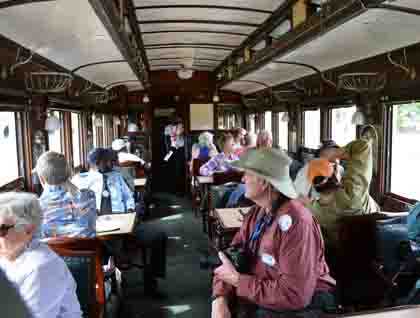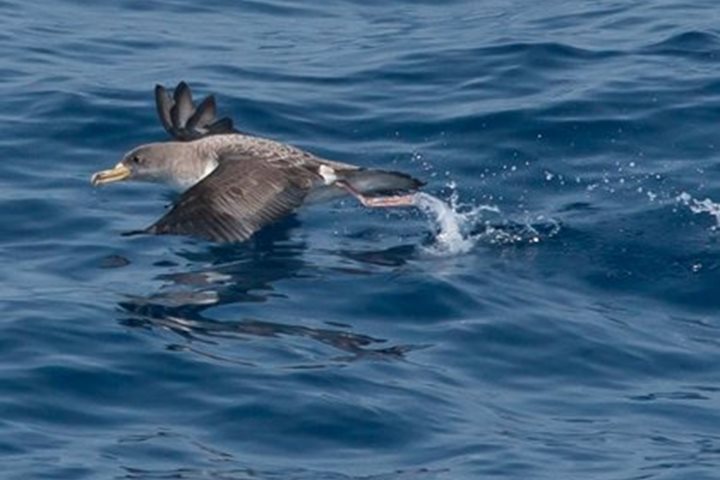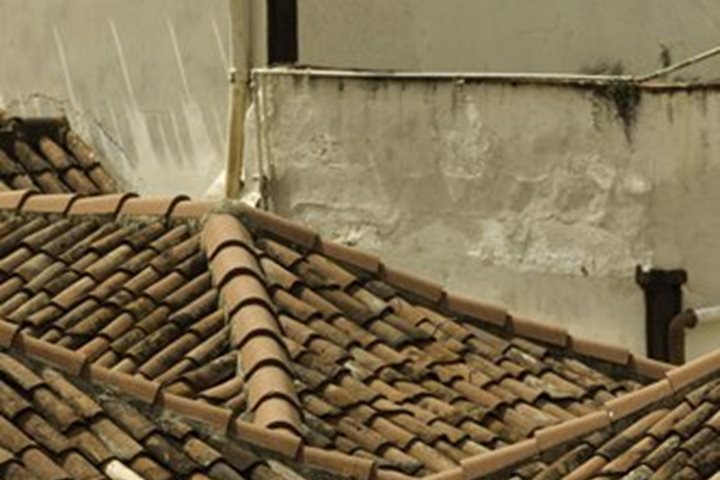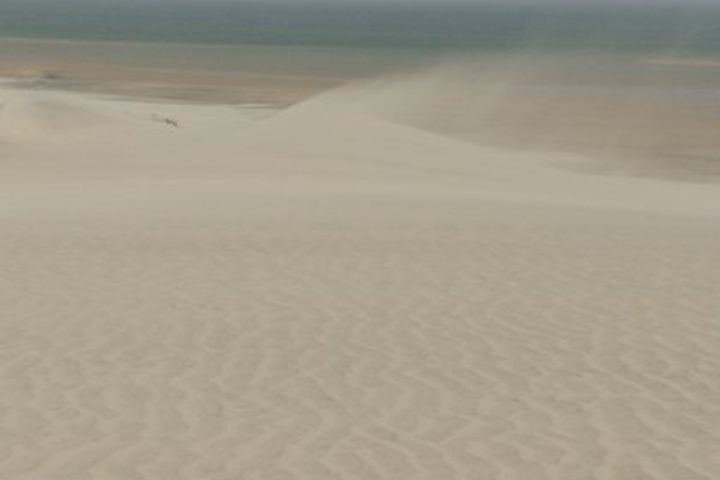Lobito offers one of the great natural harbors in Africa, located to the north of Benguela town in the province of the same name. Both Benguela and Lobito emerged as major commercial centers during Portuguese colonial rule, particularly during the nineteenth century. The National Geographic Explorer docked around 6:00 a.m. and the guests were treated to a marvelous early morning vista of the bay and the peninsula. Angolan immigration officials boarded the vessel a little behind schedule (African time can be somewhat elastic) and following clearance procedures, our group departed for a brief excursion along the offshore bar - the Restinga – a three kilometer long isthmus of sand, restaurant-bars and attractive beach villas. One of the highlights was a maritime monument located at the northern end of the bar. A small boat (the ‘Zaire ship’) looking suspiciously like the African Queen (sans Bogey and Hepburn) is preserved as a library commemorating the boat’s role in transporting current Angolan President Jose Eduardo dos Santos’s flight from Luanda to Congo-Zaire during the anti-colonial struggle.
Our group of travelers had been divided at the beginning of the day into two. One departed in buses for Benguela 30 kms to the south, the other to the Lobito train station where they embarked upon a spectacular train journey to Benguela (they subsequently returned to Lobito by coach while the other group boarded the return train). The road trip passed north on high EN100 across the new 4th of April bridge in Catumbela, passing the massive Benguela soccer stadium and on to the city itself stopping to visit the seventeenth century baroque Populo Church and the Se Cathedral.
The highlight of the day was, without question, the trip on the restored Benguela railway. The relative prosperity of Lobito and Benguela in the twentieth century was associated with the massive engineering and construction project, completed in 1931, of the Benguela to Katanga (DRC) and the Zambian copper belts. Up until the civil war in 1975 when the railway was destroyed, the railway brought both copper and other minerals (and people) from the interior to the coastal ports. The rolling stock and carriages – including magnificent mahogany furniture and detailing – have been lovingly restored to their former glory in part through a $2 billion loan from the Chinese government. While barely one third of the rail line within Angola has been restored to date, the slow and leisurely train excursion was fascinating. It provided an opportunity to see the sharp contrasts between the lowland coastal ecology – extensive wetlands and small farms cultivating maize, bananas, mangoes and papayas – and the more arid interior, and also between the impoverished families living in shacks and impermanent structures along the rail line and some of the magnificent villas along the Restinga.
Both groups were reunited in the Lobito plaza where we were treated to an impressive display of contemporary Angolan music and dance, a free beer (who said there’s no such thing as a free – liquid – lunch?) and a display of local arts and crafts including some strikingly colorful shorts – there were a few buyers brave enough to sport the colors – and photographs by a local photographer.
A lunch back on board was followed by a short presentation by the Mayor of Lobito, a young, poised and articulate young man who spoke both of the tourist potential in Angola but also to some of the questions presented to the group in lectures over the last few days: the growing presence of the Chinese, the poverty profile of the country and so on. Immediately afterwards, we were delighted to receive a young Angolan musician – Wyza Bakongo – who offered a wonderful concert in the ship’s lounge. Delivered mostly in his local vernacular (Bakongo), Wyza offered a wide menu of songs inflected clearly by the musical traditions of the Lusophone world – Brazil in particular – but also drawing up American and European music. He sang a beautiful, slightly melancholic set, tinged with a powerful sort of spirituality and emotion rooted in his own cultural traditions. Ably interpreted by Jacob, Wyza generously answered questions and provided insights into his own music and compositions. It was an extraordinary treat.
As is customary, prior to supper everyone assembled in the lounge for a recap. David provided some useful hints on how to produce short video narratives that simply and easily tell stories of our daily excursions; Eric offered a synopsis of the Benguela railway from its origins in the impulses of David Livingstone and Cecil Rhodes up to the present; Jim reinforced in his talk the significance of oil and oil politics in contemporary Angola; and Dennis offered his characteristically sardonic account of desert and other plants and why we know so little about them. Or rather, why what we think we know is wrong – to wit, balsawood is in fact a ‘hardwood’ (an angiosperm – so there!). At this point, food and wine were making their siren call from below, and a mad dash for the restaurant commenced. A day to remember.







